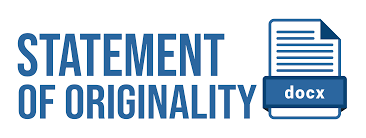Plankton Community Structure in Seagrass Beds at Selangan Hamlet, Bontang City, East Kalimantan
DOI:
https://doi.org/10.30872/jipt.v3i2.828Keywords:
Community Structure, Plankton, Phytoplankton, Selangan HamletAbstract
Plankton is an organism that lives floating in the water whose movement is influenced by the current. The presence of plankton in a water body can be used as a bioindicator because it has a high level of sensitivity and is also influenced by changes in water conditions. Changes in water conditions can be caused by human activities. The purpose of this study was to determine the structure of the plankton community in seagrass beds in the waters of Selangan Hamlet. This research was conducted in November-December 2019 in Selangan Hamlet, Bontang City, East Kalimantan. Data analysis includes abundance, diversity index, uniformity index and dominance index. The results showed that the composition of plankton species found in the waters of Selangan Hamlet at 4 stations with conditions at high tide and low tide obtained 13 plankton classes namely Cyanophyceae, Bacillariophyceae, Oligotrichea, Dinophyceae, Foraminifera, Chlorophyceae, Trebouxiophyceae, Conjugatophyceae, Hexanauplia, Crustaceae, Gastropoda, Tubulinea, and Euglenoidea consisting of 47 plankton species. Plankton abundance ranged from 893-2,514 ind/L. The structure of the plankton community in the waters of Selangan Hamlet has a Diversity Index (H') value in the medium category with a range of values of 2.28-2.99, Diversity Index (E) category of stable plankton communities with a range of values of 0.82-0.95, and Dominance Index (C) category there is no dominant genus at each research station with a range of values of 0.06-0.14.
References
Bold, H.C., Wynne, M.J. 1985. Introduction to the Algae, Structur and Reproduction. New York: Englewood Clifts. Pretince Hall Inc. 720 hal.
Davis, Charles C. 1955. Marine and Fresh-Water Plankton. Published by Michigan State University Press.
Faza, M. F. 2012. Struktur Komunitas Plankton di Sungai Pesanggrahan dari Bagian Hulu (Bogor, Jawa Barat) Hingga Bagian Hilir (Kembangan, DKI Jakarta). Skripsi Jurusan Biologi. Universitas Indonesia. Depok.
Isnansetyo, A. & Kurniastuty. 1995. Teknik Kultur Phytoplankton dan Zooplankton (pakan alami untuk pembenihan organisme laut). Kanisius. Yogjakarta.
Krebs, 1978. Ecology. The Experimental Analysis of Distribution and Abundance. Trhid Edition Harper and Row Distribution, New York.
Krebs, C. J. 1989. Ecology the Experiment Analysis of Distribution and Abundance. Harper and Row Publisher. New York.
Legendre, C., dan Legendre, P. 1983. Numerical Ecology. New York: Elsevier Scientific Publisher Company.
Mackentum, K.M. 1969. The Practice of Water Pollution Biology. United States Department of Interior, Federal Water Pollution Control Administration, Division of Technical Support. 411p
Mason C. F. 1981. Biology of freshwater pollution. London : Longman Group Limited..250 p.
Nontji, Anugerah, 2008. Plankton Laut. Jakarta: LIPI Press.
Nybakken, James W. 1992. Biologi Laut Suatu Pendekatan Ekologis. PT Gramedia. Jakarta.
Peraturan Pemerintah RI Nomer 22 Tahun 2021 Tentang Penyelenggaraan Perlindungan dan Pengelolaan Lingkungan Hidup.
Reguera, B., L. Velo-Suárez., R. Raine & M. G. Park. 2012. Harmful Dinophysis species: A review. Elsevie.
Sachlan, M. 1972. Planktonologi I. Direktorat Jenderal Perikanan. Departemen Pertanian Jakarta.
Sugiyono. 2016. Metode Penelitian Kuantitatif, Kualitatif dan R&D. Bandung: PT Alfabet.
Sunarti. 2002. Kelimpahan Plankton Pada Ekosistem Tambak Bandeng Layah di Tambak Harjo Semarang Barat. Skripsi. Semarang: Universitas Negeri Semarang.
Downloads
Published
Issue
Section
License
Copyright (c) 2024 Nusantara Tropical Fisheries Science (Ilmu Perikanan Tropis Nusantara)

This work is licensed under a Creative Commons Attribution-NonCommercial-ShareAlike 4.0 International License.








